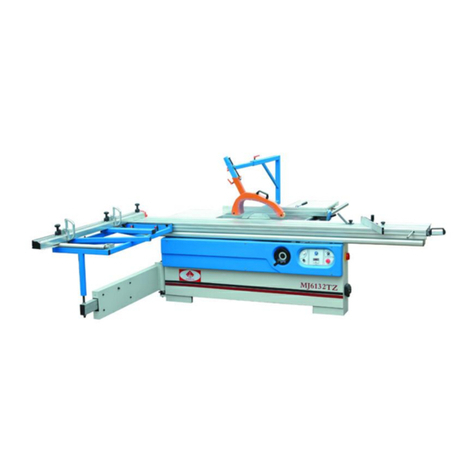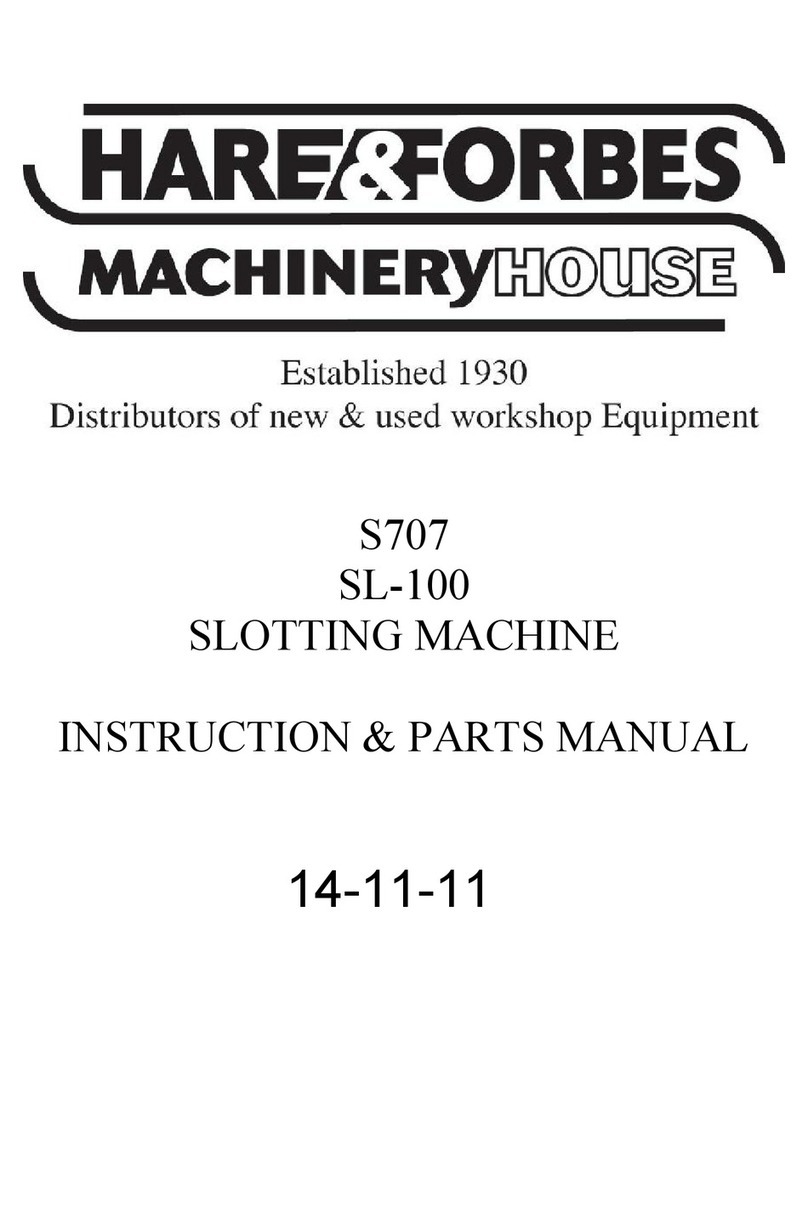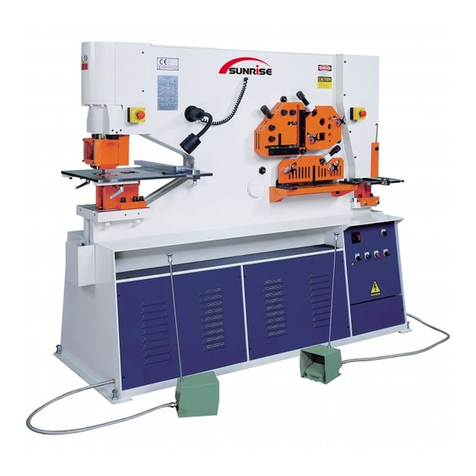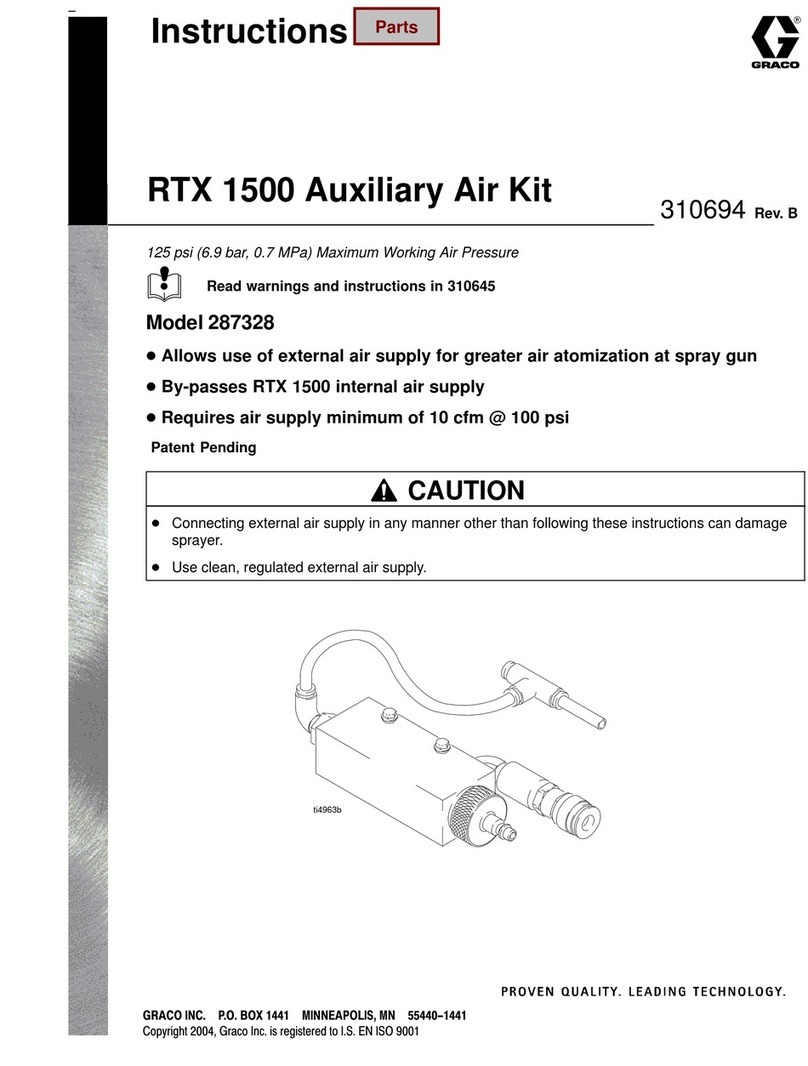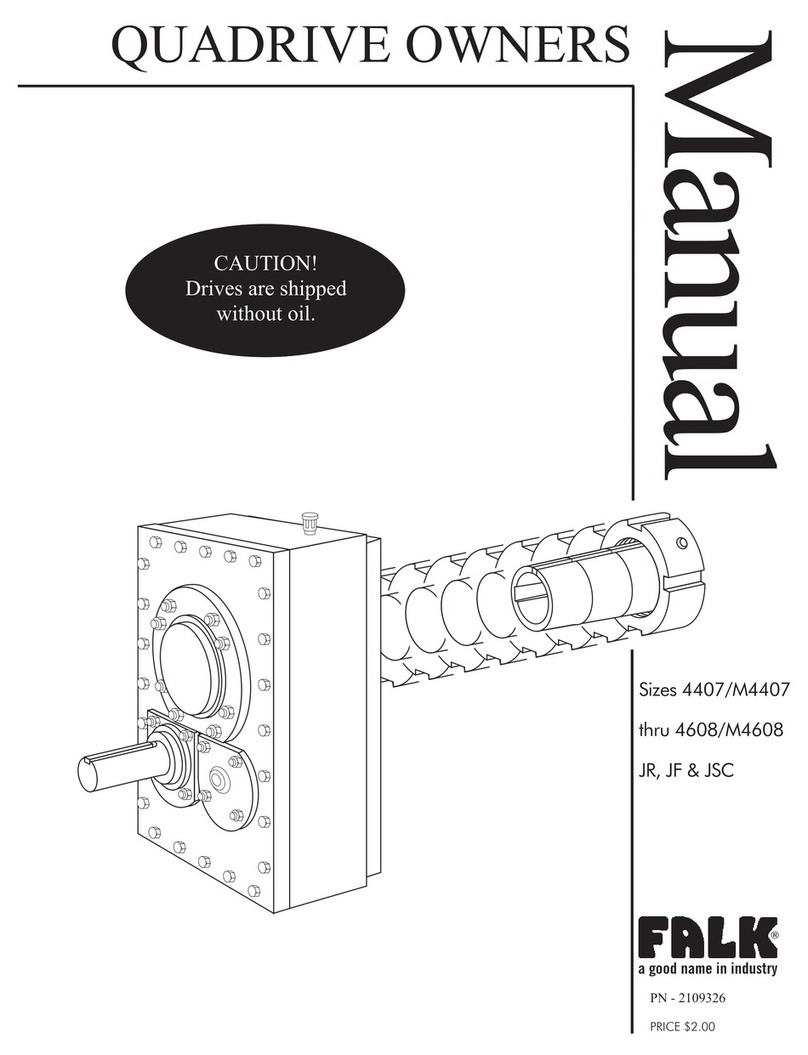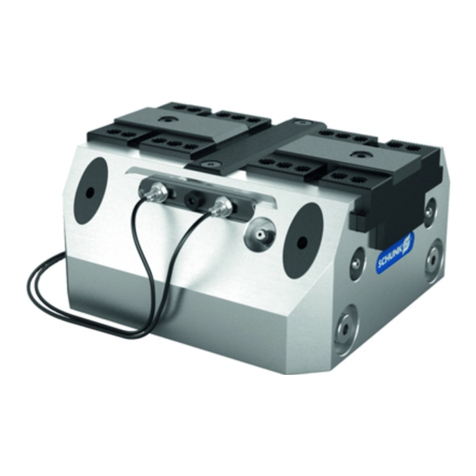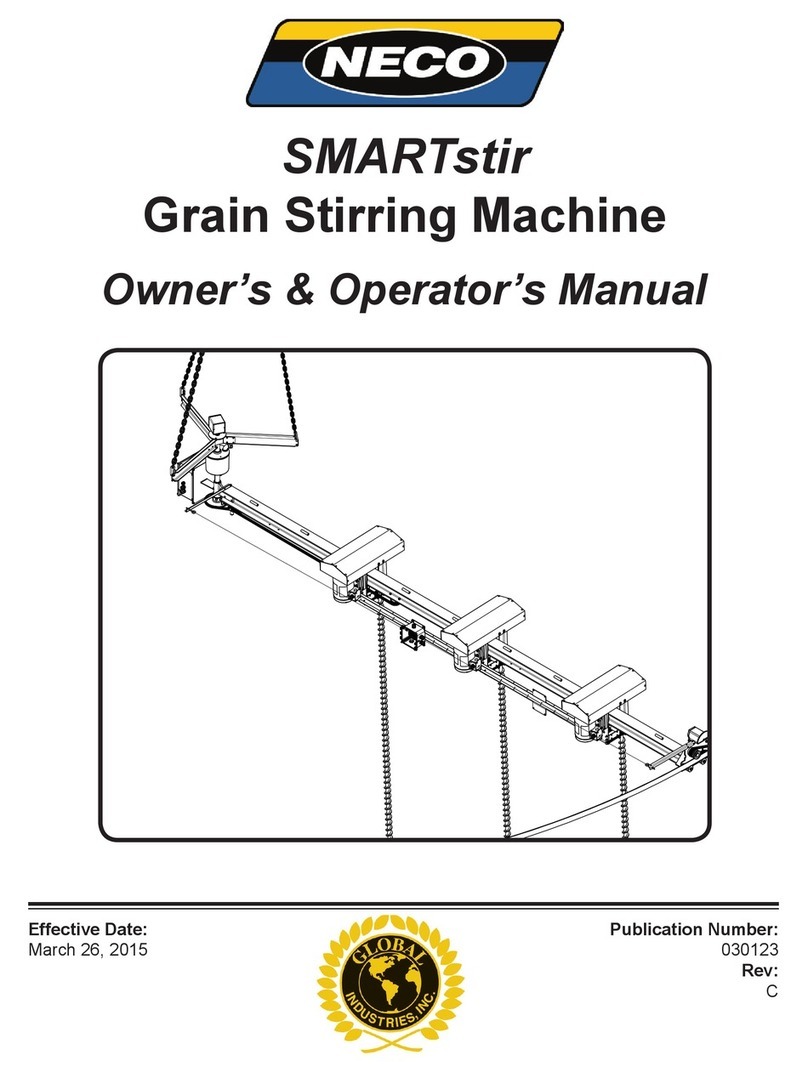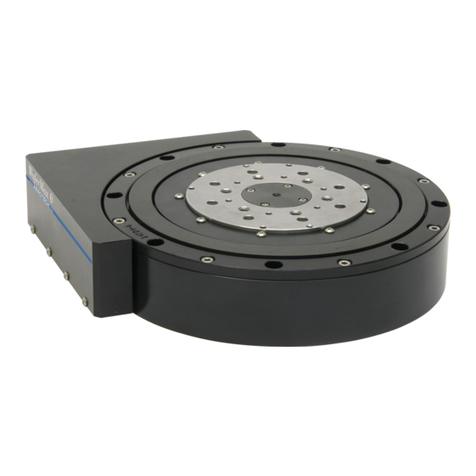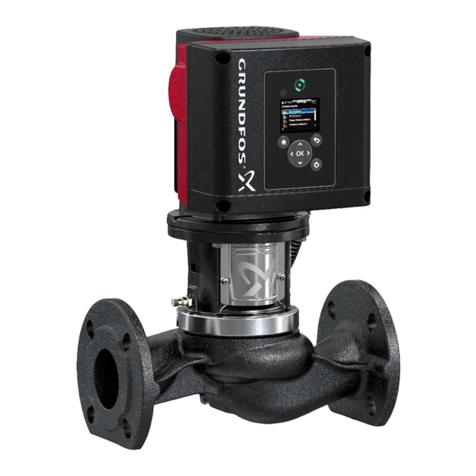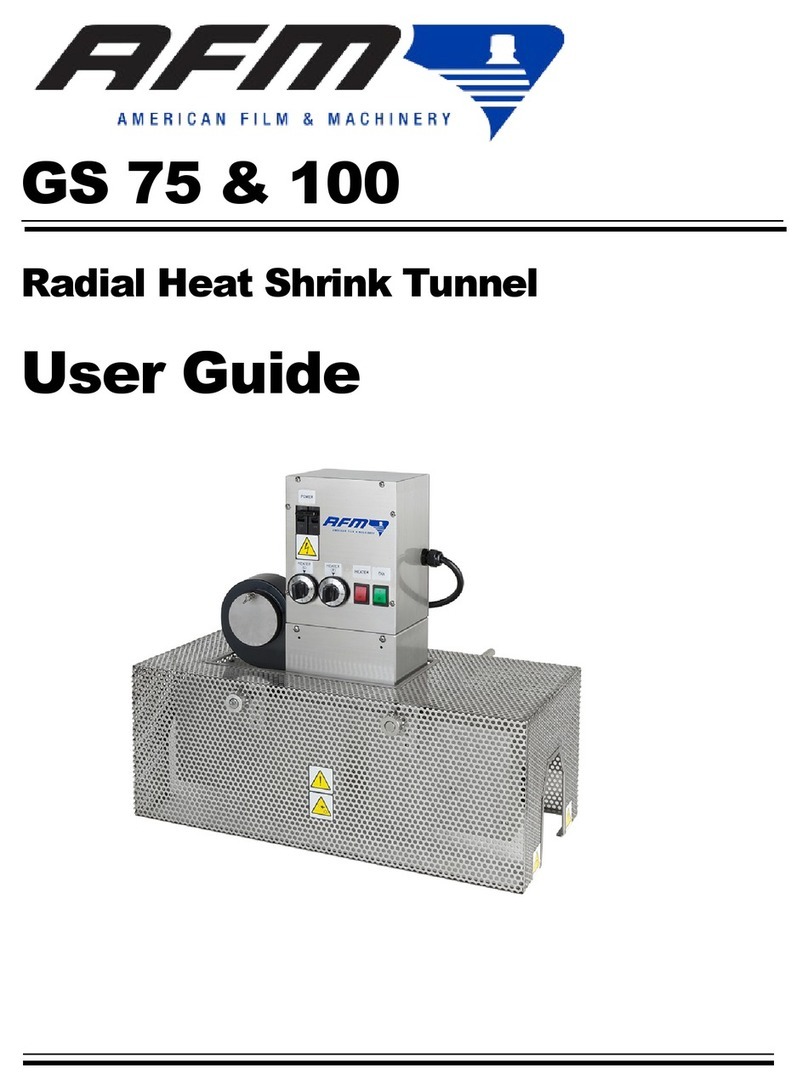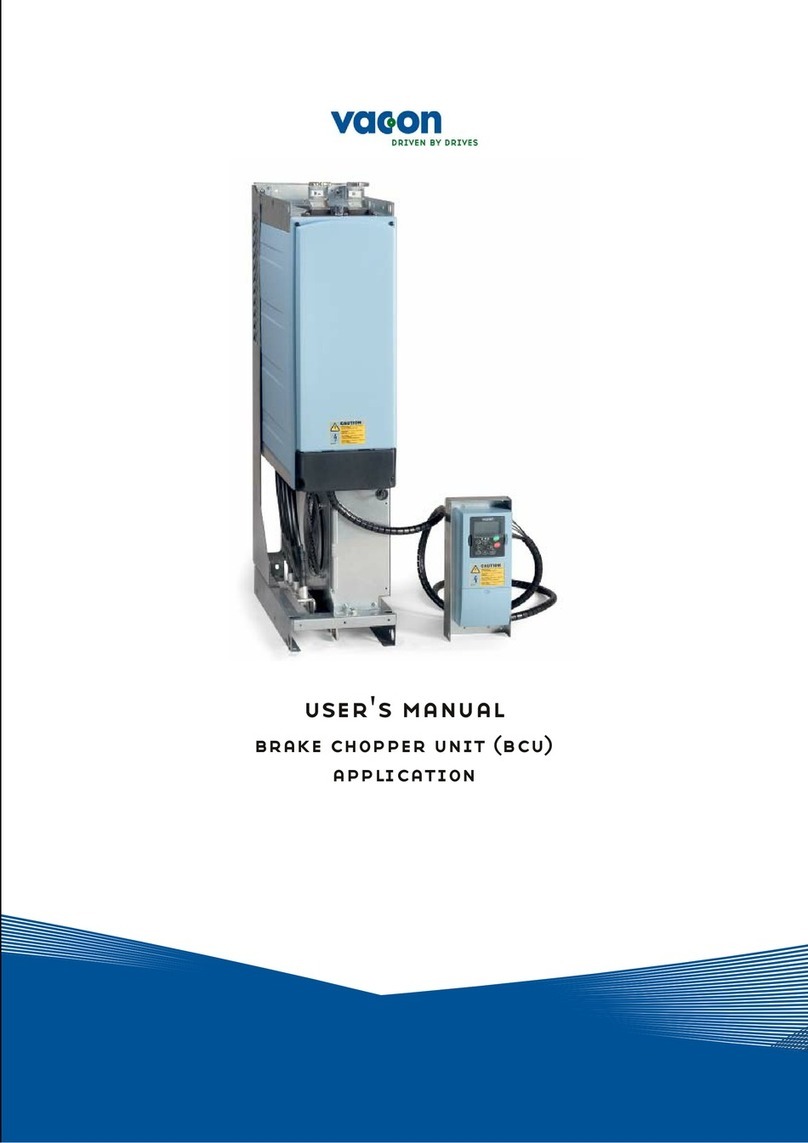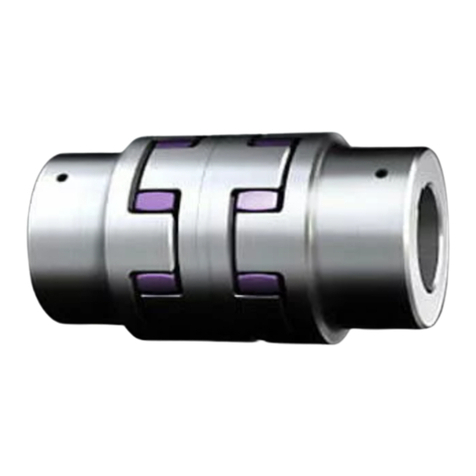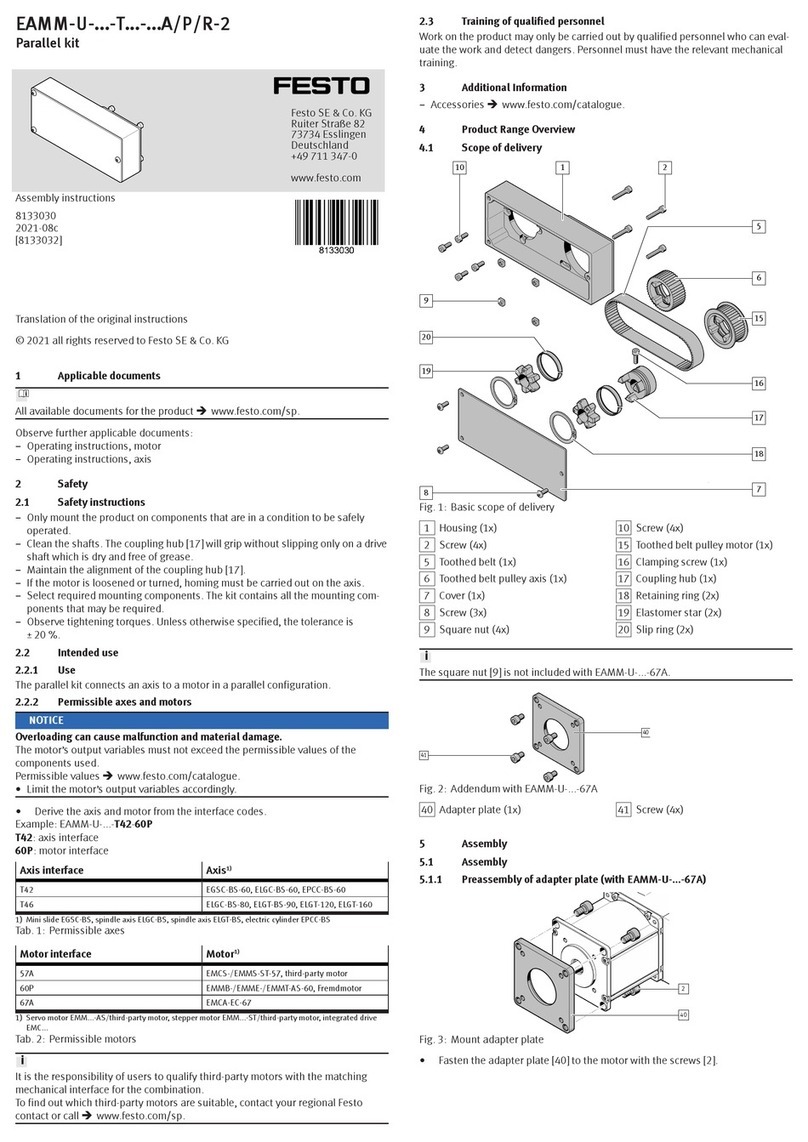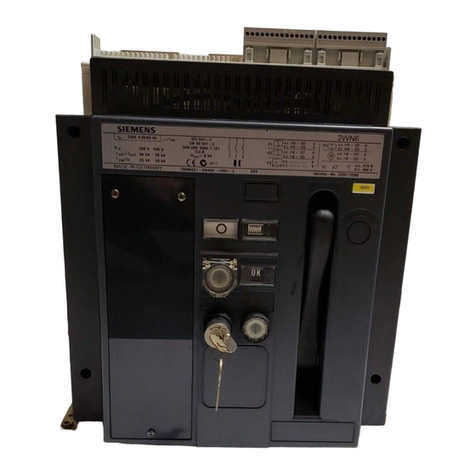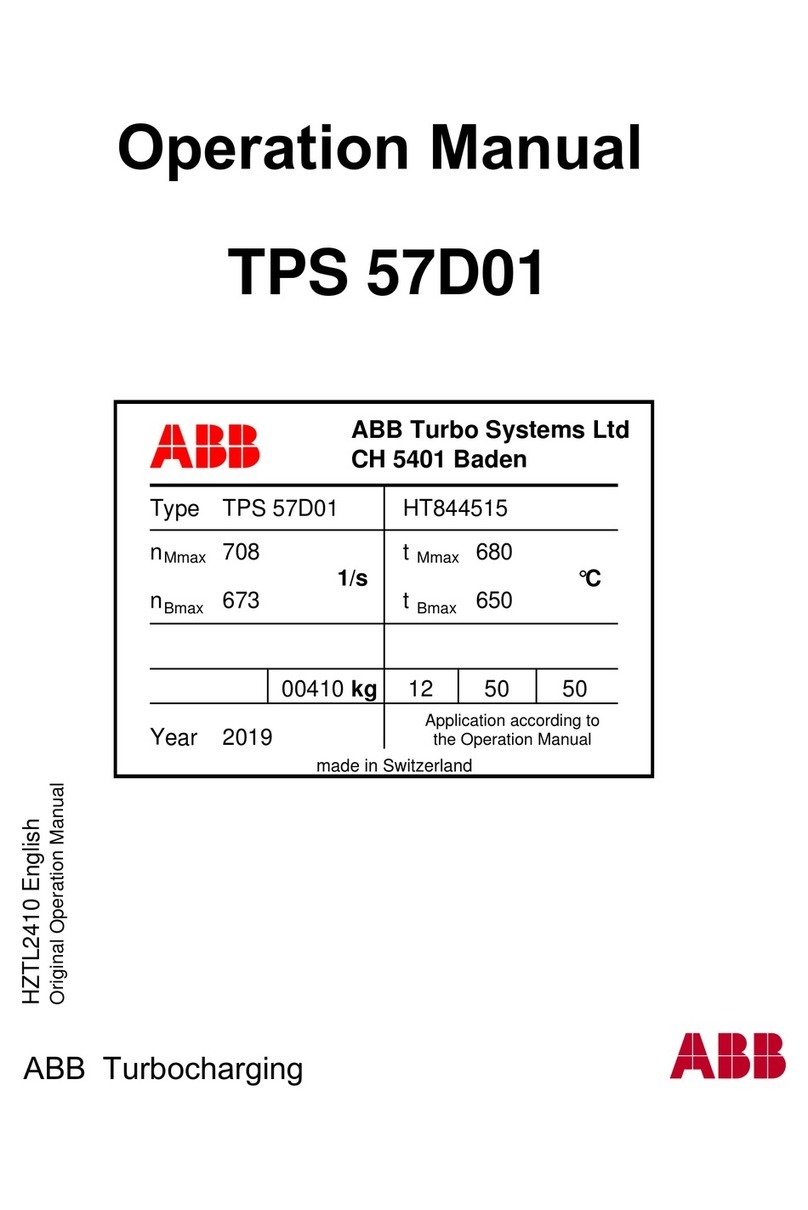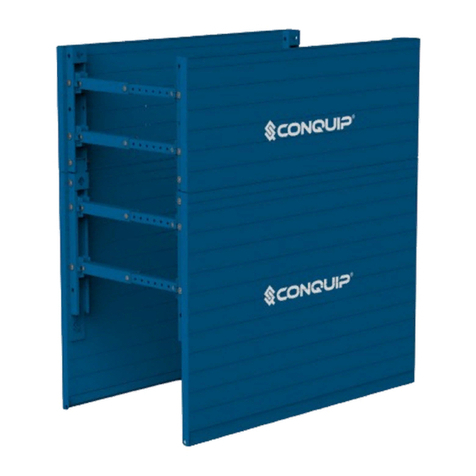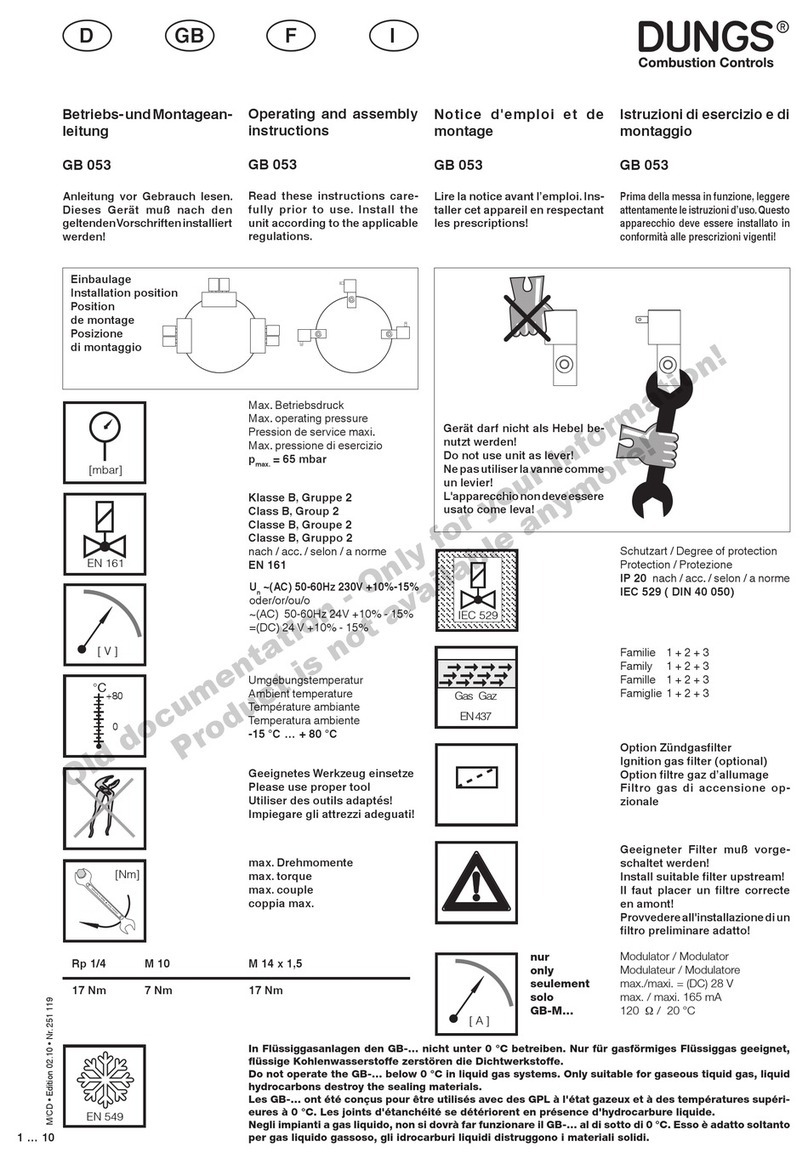MachineryHouse Metalmaster PB-820A User manual

PB-422A 1250x2mm Hand folder
Operation Manual
Leave factory date:______________
Leave factory No:________________

Use and Capability…………………………………………2
Structure and adjustment introduction………………2
Machine operation and use introduction……………4
Logical use and servicing………………………………4
Operation Manual
Hand folder
Total P4 No p1
lndex

1.small balancing hammer 2.side board 3.adjusting block
course , workpiece and blade won ,t work oppositely and impactively , the
surface of workpiece will be unknited and glabrous , it’s specially suitable
for the high cultured workpiece.
According to the specs, the machine is widely used for the pressing and
with length 2.5m, thickness less 1.5mm. It’s the formed processing equipment
for the chests, ducts of home appliances, stainless steel kitchenwares,
air-condition equipments.etc. The machine is entirty operated by hand ,
turnovering work of the armor plate , colored metals, stainless steel plate
4.upper beam impacted handle 5.upper beam adjusting nut
6.big balancing hammer 7.upper beam 8.upper crossbeam strengthen metal
9.upper power blade 10.table-flap 11.table-flap handle 12.baseboard
13.lower crossbeam strengthen metal
with orientation structure , can volume-produce workpiece which has fixed
angle and especial shape. The bottom blade is fixed, top blade is impacted , top
blade is impacted , then use the theory of table-flap upgrade to fold. In the whole
Structure and adjustment introduction:
Operation Manual
Hand folder
Total P4 No P2
Use and Capability:

of upper crossbeam , base crossbeam and table-flap all distribute at both
blade : To adjust left right block 3 , can adjust the space between upper beam
center. According to the spec and thickness workpiece sheet thickness of
over this problem . by screwing down and adjusting nut A to make upper
and base crossbeam both endured and make the interspace protruded
(max-height 0.5mm ) to compensate the distortion. Table-flap jiggles up and
down A , B makes it balanceable. It can guarantee the quality of workpiece .
detours . That will effect the linearity of workpiece . If you make angles of
2. Adjustment of the support capability and folding level degree : The fulcrums
ends of upper . During processing workpiece , it’s hard to avoid definite
both sides suitable, angle of interspace won’t be enough . In order to work
and table-flap S , to make S = 1.3t ( t is thickness ) , to adjust 5 to make upper
machine the user can adjust.
1. Adjustment of the space S between upper crossbeam blade and table-flap
and base blade balanceable , then to lock the bolt . When the space is too
small , the blade wears badly .
Operation Manual
Hand folder
Total P4 No P3
Upper crossbeam and base crossbeam, table-flap make up of the table-flap
structure .When the blade leaves factory , it has been adjusted in gyration

Please check the distance of blades , “ S ” in picture 2 folding shouldn’t exceed
Clamp sheets between upper and base crossbeam , fix the angle localizer in
the left folding axis , turn table-flap to angle localizer , then can fold workpiece
with needed angle .
The machine is using 45°power blade . 45°power blade uses interseeted blade
value stipulated , avoiding to wear power blade . You’d better averagely use
every part of blade , make them wear averagely . During operation , people
mustn’t stand behind the balance hammer , in order to avoid accident . Please
pay attebtion to the station of axes and lubricate situation .
Logical use and servicing
Operation Manual
A Hand folder
Total P4 No P4
Machine operation and use introduction
form . Clients can make different power blade length in term of the workpiece size
and fold different sized chests . Representative folding can be seen below , picture 4 .
picture 4

Date :
Unqualified
Signature
(1)The surface with oil paint is even,shining,intact,
no visible extrusive granule and bur.The
following situations aren,t allowed: the
surface is obviously accidented, oil paint
is sagging , bubbling ,blushing and dulling.
(2) The surface cannot be uneven ,scratched
and rusty.
Impact Noise, screech and noise caused by
improper assembly aren’t allowed during
working.
Qualified
(3) The words of the logo and scutchcon should
be clear and durable. The logo and scutcheon is
fixed correetly ,even upright.
Hand folder
Certificate of Competency
NO.
The item
and
checking
method
Content and standard requirement
1
Appearance
3
cleaning
degree
The surface and interior of the machine should
be neat,no oil stain, dust rust,iron scrap
and other sundries.
2
Noise
Signature
(1) The clearance for beeline degree of sheet
bending’s doesn’t exceed 1 mm per 1000mm.
4
5
Geomctrical
Preeision
Machining
preeision
(1) The tolerance for the level clcarance uniformity
of top beam and the die
(upper blade and lower blade ) is 0.15mm .
0.15
Allowable
Tolerance
Measuring
1mm
This machine is qualified by cheekup and approved for release
(2) The swaying angle between upright joint
surface and working table-board is ±1°.This
upright joint surface is between die (blade)
and folding plate beam .
±1°
Chief Quality Control Engineer :
2°
(2) The angle difference of sheet bending
doesn’t exceed2°per 1000mm.
(3) Radius tolerance of sheet bending doesn’t
exceed 1mm per 1000mm.
1mm

NO Model Qty Remark
01 6 lpc
02 10 lpc
03 12 lpc
04 lpc
05 22-24 lpc
06 17-19 lpc
PB-422A 1250x2mm Hand folder
Packing List
Name
Inner hexagon spanner
Double-ended spanner
Inner hexagon spanner
Inner hexagon spanner
Oil gun
Double-ended spanner

Quality Management Department(stamp)
Factory Director(stamp)
Series No:_____________
Date: _____________
PB-422A 1250x2mm Hand folder
Certificate of Competency
This machine is qualified by checkup
and approved for release

Panbrake
Setup & Operation - Hydraulic Clamp Models
CAPACITY
The capacity of your machine is stated on the
specications plate on the frame. This capacity is a
mild steel rating. The capacity for other materials will
vary. For example Stainless Steel is approximately
0.5x the mild steel rating & aluminium is 1.5x the mild
steel rating.
Some machines have a quick adjusting arm with pin positions
marked 0-8. This should represent your clamp gap.
Example: If you are bending 4mm put the pin in position 6.
This must be done on both sides of the machine.
SETTING CLAMP GAP
Set the clamp gap to match your
material thickness.
The clamp gap must be minimum
1.5 x Material Thickness
Example: If 4mm is to be bent, then
the clamp “GAP” must be set to
minimum of 6mm
Each panbrake may have a different
mechanism for adjusting the clamp
gap but you must maintain the 1.5
x Material Thickness to prevent
overload and possible damage.
GAP
CLAMP FINGER
FOLDING ARM
BED
6mm POSITION
You may have to use a combination of top clamp adjustment
and apron adjustment when doing thicker material like 6mm
aluminium.
(1.5 x 6mm = 9mm, so you need a total gap of 9mm)
Example: If the top clamp gap is 6mm the apron must be
dropped down 3mm to keep a 9mm total gap.
NOTE: Must release locking bolts before adjusting apron
up / down. Tighten when at correct height.
APRON
HEIGHT
ADJUSTMENT

CORRECT CLAMP OPERATION
If your panbrake has hydraulic clamping it will have a 2 stage travel on the clamp. When the foot pedal
is pressed the clamp will travel down continuously and stop approximately 20mm above the bed.
Release the clamp pedal and press again to complete clamping.
Important - The clamp pressure is set to bend the maximum capacity over the full length. If shorter
pieces, very thin or softer materials are used, there is a possibility that damage can be caused to either
the work piece or the ngers. There are 2 clamping techniques the operator can use depending on
the material used.
Light clamping - The operator can use the clamp foot pedal with caution and only use enough force
required to hold material for bending. It is used when clamping thin aluminium or small pieces of
thicker material.
Heavy clamping - There is a pressure switch that is set to maximum clamping pressure. The operator
can press the clamp pedal until full capacity clamping is achieved. This technique can be used for
bending full lengths of thicker material.
Double check GAP - You must now clamp your job and check the clamp gap to make sure it is
correct.
CORRECT
AMOUNT OF
FORCE
TOO MUCH
AMOUNT OF
FORCE
Caution - There is a minimum “Return length” of
15 x Thickness of Material when bending thicker
material over 1mm. Damage could occur to machine
if return is too short.
Example: If bending 4mm then the minimum return
length must be 60mm.
Return Length
RETURN LENGTH - LIMITATION

General Machinery Safety Instructions
1. Read the entire Manual before starting
machinery. Machinery may cause serious injury if
not correctly used.
2. Always use correct hearing protection when
operating machinery. Machinery noise may cause
permanent hearing damage.
3. Machinery must never be used when tired, or
under the influence of drugs or alcohol. When
running machinery you must be alert at all times.
4. Wear correct Clothing. At all times remove all loose
clothing, necklaces, rings, jewelry, etc. Long hair
must be contained in a hair net. Non-slip protective
footwear must be worn.
5. Always wear correct respirators around fumes
or dust when operating machinery. Machinery
fumes & dust can cause serious respiratory illness.
Dust extractors must be used where applicable.
6. Always wear correct safety glasses. When
machining you must use the correct eye protection
to prevent injuring your eyes.
7. Keep work clean and make sure you have good
lighting. Cluttered and dark shadows may cause
accidents.
8. Personnel must be properly trained or well
supervised when operating machinery. Make
sure you have clear and safe understanding of the
machine you are operating.
9. Keep children and visitors away. Make sure
children and visitors are at a safe distance for you
work area.
10. Keep your workshop childproof. Use padlocks,
Turn off master power switches and remove start
switch keys.
11. Never leave machine unattended. Turn power off
and wait till machine has come to a complete stop
before leaving the machine unattended.
12. Make a safe working environment. Do not use
machine in a damp, wet area, or where flammable
or noxious fumes may exist.
13. Disconnect main power before service
machine. Make sure power switch is in the off
position before re-connecting.
14. Use correct amperage extension cords.
Undersized extension cords overheat and lose
power. Replace extension cords if they become
damaged.
15. Keep machine well maintained. Keep blades
sharp and clean for best and safest performance.
Follow instructions when lubricating and changing
accessories.
16. Keep machine well guarded. Make sure guards
on machine are in place and are all working
correctly.
17. Do not overreach. Keep proper footing and
balance at all times.
18. Secure workpiece. Use clamps or a vice to
hold the workpiece where practical. Keeping the
workpiece secure will free up your hand to operate
the machine and will protect hand from injury.
19. Check machine over before operating. Check
machine for damaged parts, loose bolts, Keys and
wrenches left on machine and any other conditions
that may effect the machines operation. Repair and
replace damaged parts.
20. Use recommended accessories. Refer to
instruction manual or ask correct service officer
when using accessories. The use of improper
accessories may cause the risk of injury.
21. Do not force machinery. Work at the speed and
capacity at which the machine or accessory was
designed.
22. Use correct lifting practice. Always use the
correct lifting methods when using machinery.
Incorrect lifting methods can cause serious injury.
23. Lock mobile bases. Make sure any mobile bases
are locked before using machine.
24. Allergic reactions. Certain metal shavings and
cutting fluids may cause an ellergic reaction in
people and animals, especially when cutting as the
fumes can be inhaled. Make sure you know what
type of metal and cutting fluid you will be exposed
to and how to avoid contamination.
25. Call for help. If at any time you experience
difficulties, stop the machine and call you nearest
branch service department for help.
Machinery House
requires you to read this entire Manual before using this machine.

Manual Panbrake Safety Instructions
1. Maintenance. Make sure all moving parts are
locked down before any inspection, adjustment or
maintenance is carried out. Place a block of timber
between the Top Tooling and bed to help save hand
or fingers from being crushed.
2. Panbrake Condition. Panbrake must be maintained
for a proper working condition. Never operate
a Panbrake that has damaged or worn parts.
Scheduled routine maintenance should performed on
a scheduled basis.
3. Tooling Condition. Never operate a Panbrake with
damaged or badly worn tooling. Replace if required.
4. Hand Hazard. Do not insert or extend your hands
in between bending tools, under any circumstances,
while the machine is in operation mode. Serious
injury can occur.
5. Gloves & Glasses. Always wear leather gloves and
approved safety glasses when using this machine.
6. Work area hazards. Keep the area around the
Panbrake clean from oil, tools, objects & chips. Pay
attention to other persons in the area and know what
is going on around the area to ensure unintended
accidents.
7. Guards. Operate machine only with all protective
devices and guarding.
8. Material. Do not over load the machines capacity by
using material which is too thick or hard.
9. Warning Labels. Take note of any warning labels on
the machine and do not remove them.
10. Support arms. Do not use support arms for
intermediate storage of workpieces.
11. Operation. During the bending process, the
workpiece may leap up. Therefore, the material
must be handled carefully.
12. Secure Panbrake. Make sure you bolt and the
machine down so it is secure when in operation.
13. Heating Material. Heating metal with a torch while
the metal is in the panbrake will weaken the fingers.
14. Pinching. Prevent pinching by lowering the
panbrake fingers when not in use.
15. Call for help. If at any time you experience
difficulties, stop the machine and call you nearest
branch service department for help.
Machinery House
requires you to read this entire Manual before using this machine.

Manager:
Manual Panbrake
F
STRIKING
Authorised and signed by:
Developed in Co-operation Between A.W.I.S.A and Australia Chamber of Manufactures
This program is based upon the Safe Work Australia, Code of Practice - Managing Risks of Plant in the Workplace ( WHSA 2011 No10 )
NEW MACHINERY HAZARD IDENTIFICATION, ASSESSMENT & CONTROL
Safety officer:
PLANT SAFETY PROGRAM
No.
Hazard
Identification
Item
Hazard
Assessment
B
C
CRUSHING
CUTTING, STABBING,
PUNCTURING
MEDIUM
Risk Control Strategies
(Recommended for Purchase / Buyer / User)
Ensure machine is bolted down.
Secure & support work material on table etc.
Ensure the area around the counter weight is kept clear.
Keep fingers clear during clamping.
MEDIUM
LOW
Wear gloves to prevent cuts from sharp material offcuts.
Revised Date:
www.machineryhouse.com.au
www.machineryhouse.co.nz
12th March 2012
Plant Safety Program to be read in conjunction with manufactures instructions
Lower Panbrake fingers when not in use.
This manual suits for next models
1
Table of contents
Other MachineryHouse Industrial Equipment manuals

